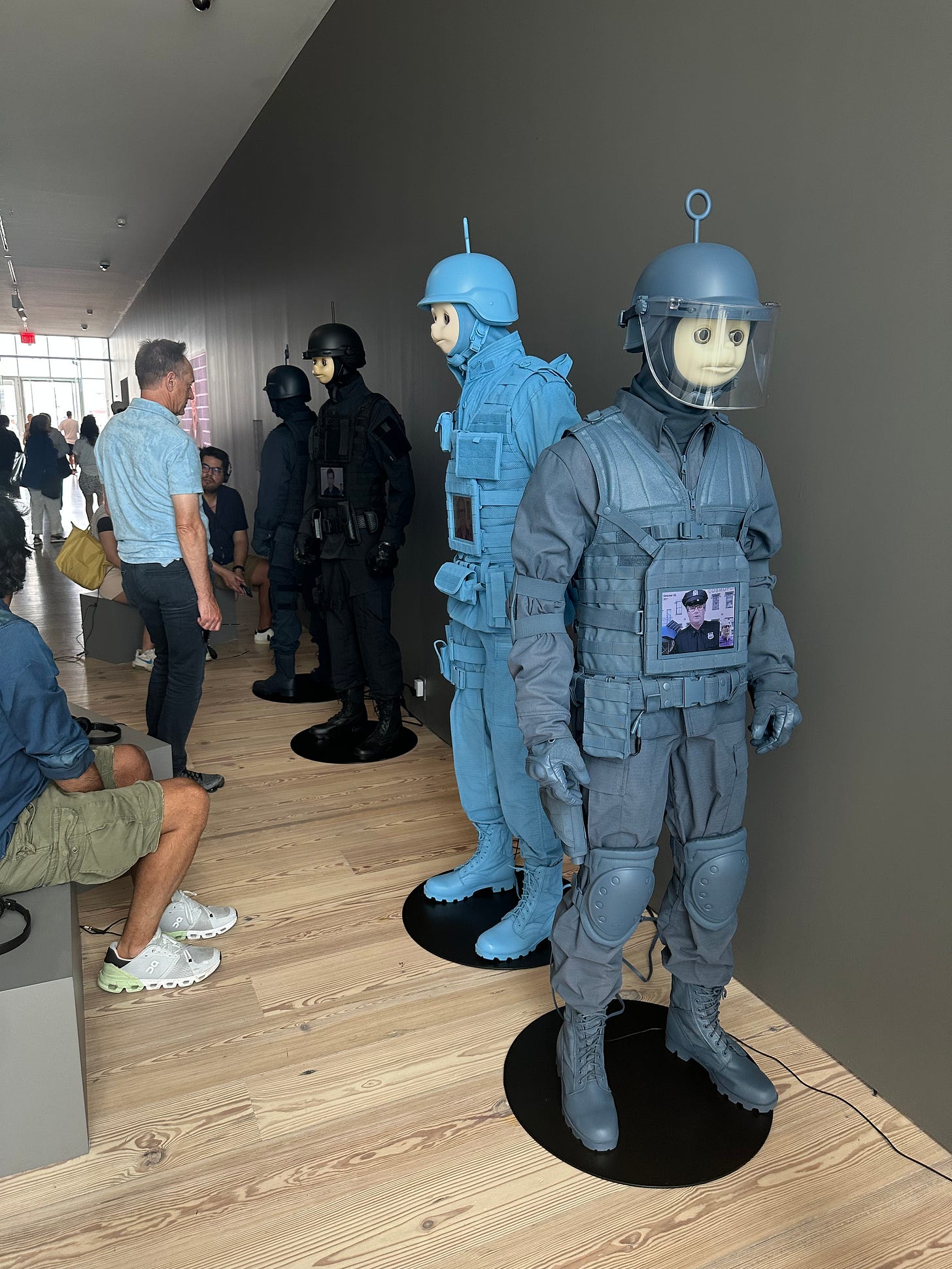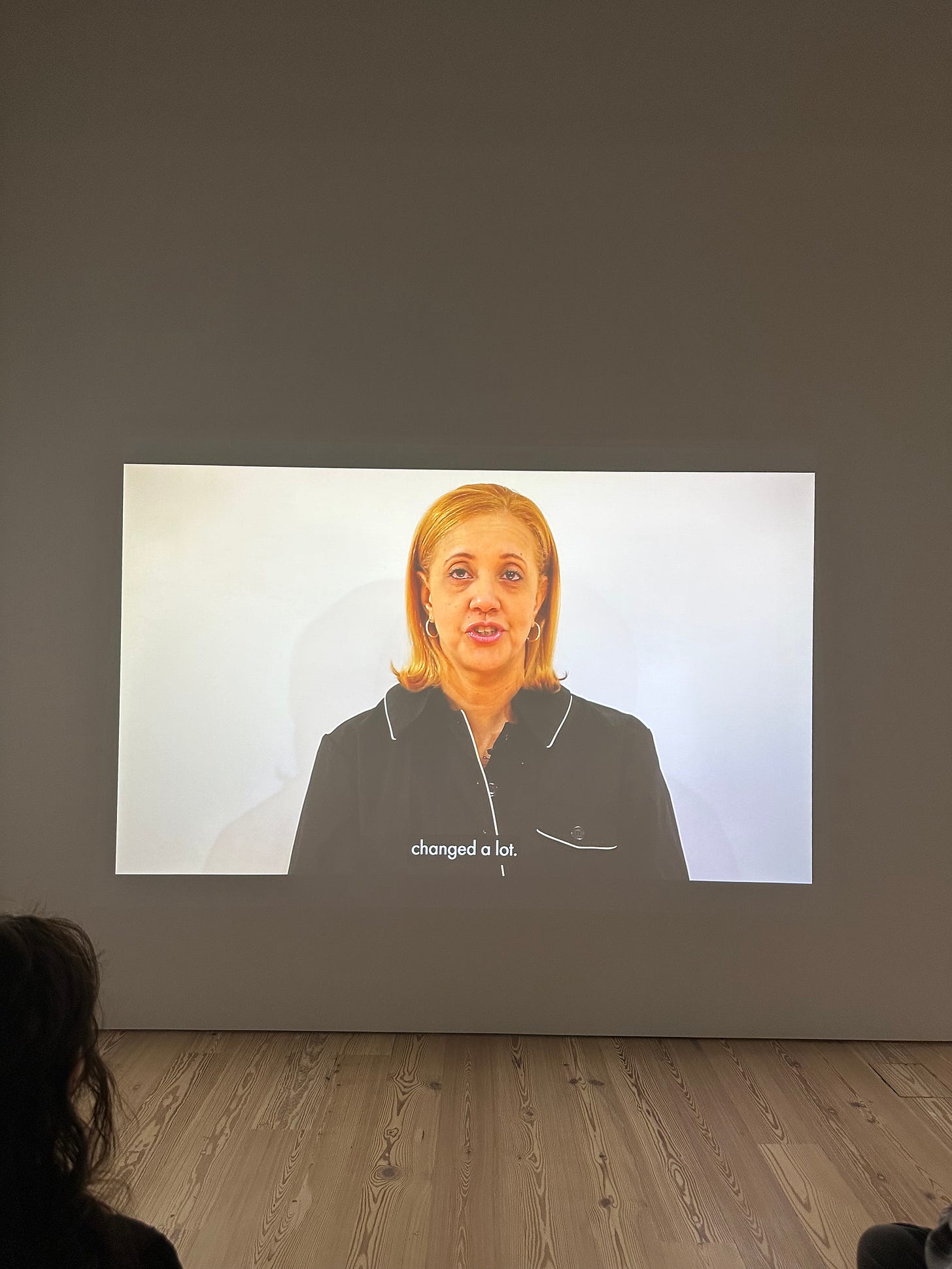Josh Kline: Project for a New American Century
This is who we are. Is this who we are? This insistent dialectic murmurs and drones among the bodies of works in Josh Kline’s survey at the Whitney. The title of the survey show, Project for a New American Century, signals the scope and timescale of his ambition. Kline is taking on an inquiry into the human condition, as it stands now, and in his country. This ambition has led him into an appropriately wide breadth of crises facing us: the neoliberal turn, the plight of the working class, inexorable consumption, and climate change.
Also appropriately to his desire to engage a broad audience, Kline uses the conventions of mass communication and display to present his work. (He is not alone among artists in doing so, but there are differences that make him more effective; I’ll get back to this.) The first important mode of presentation for Kline is the mise-en-scène. Here he presents the work in the way we might encounter it in the outside world, outside of the gallery space. The beige carpeting of Unemployment brings to mind the faceless drab environs of the branch office. The sleek, internally-lit presentation cases of Creative Labor put us in shopping mode, in a store that’s a step above Bed Bath & Beyond. The foldable seating and the safety orange of Personal Responsibility place us in crisis camps and so many post-apocalyptic movie sets.
The strength of using mise-en-scène for presenting his work is revealed by a counterexample, when he does not use it in one case. Disappointingly, as seen below, his Teletubby police guards are relegated to a hallway, and look lost. When they were first presented at a New Museum Triennial, within the paranoiac setting of his installation Freedom, they were much more menacing and humorous.
The use of mise-en-scène flows naturally from a primary touchstone for Kline, namely film, and its expressive and imaginative power. Film remains the foremost vehicle of our collective imaginary today: Who hasn’t said “This is just like a movie” when watching a real-life crisis unfold? And so if we’re in the territory of film, what kind of film is playing out? I say horror — a mix of the body horror of David Cronenberg, the paranoia of John Carpenter, and the stochastic trauma of Michael Haneke.
Also present in this survey is his use of other moving image conventions, like promotional advertising and the video interview. The use of the conventional — or the vernacular — in both presentation and communication, is key to Kline’s practice, and showcases his desire to appeal directly to the viewer, outside the usual conventions of art institutions and their attendant, stultifying discourses. I admire that.
What grounds the work, what raises it above mere comment or critique, is the specificity of the stories, as for example in Blue Collars and Personal Responsibility. These stories connect the larger forces at play with individual concern. As I watched the video interviews in Blue Collars, I saw the usual stream of museum-goers, sometimes pausing for a bit, sometimes sitting for an hour, to listen to the interviews of several workers at the most vulnerable rungs of the legal economy. The substantial interviews were conducted by Kline, and dig into the particulars of their lives: how they got their jobs; what they are paid; who they voted for; what they thought about Trump; the precarity of their situations; their dreams and aspirations; etc. Within the same room, opposite the video, are arrayed 7 or 8 collections, perversions of Fedex boxes, cleaning carts, and serving trays, containing disembodied heads and limbs along with recast tools of the trade. (One of these is pictured below at bottom.) The video interviewees had been scanned and cast to create the disembodied fragments. The pairing of the horrific set pieces with the interviews redeems the larger work. All at once we recognize the difficulties of representation within an artwork. And, tapping into Kline’s larger project, we also key in on the difficulties of representation within America.







